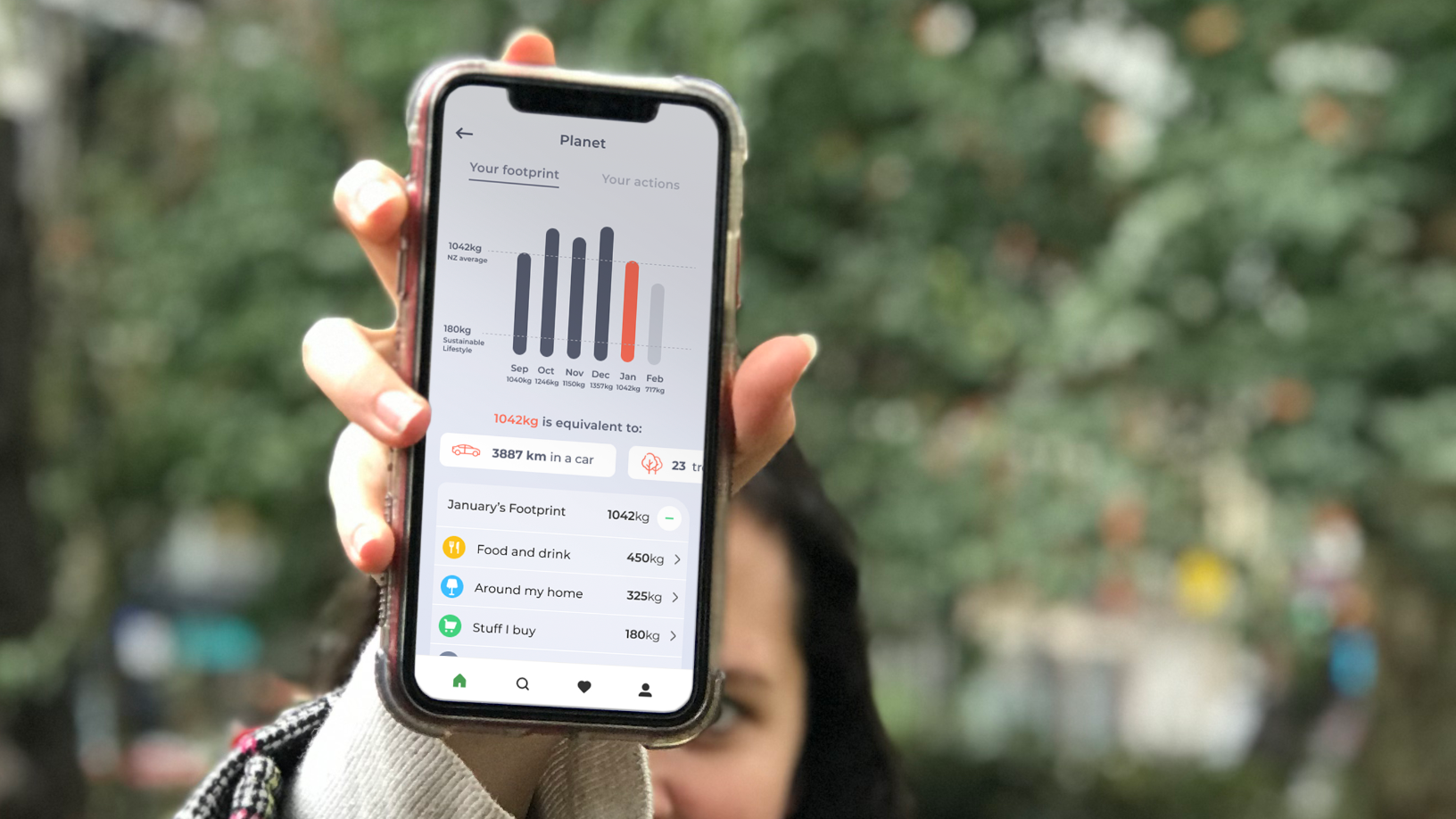English has been the most commonly used language in the business and technology sectors globally for decades, and non-English-speaking countries have made teaching the language to children a top priority at school. Numerous studies, including most recently one by the Massachusetts Institute of Technology, cite the critical importance of learning languages in early childhood to become bilingual. In many countries such as Spain, however, children have little real immersion in the language even though they start may learning English at an earlier age.
With English ever more essential for a career and an estimated 1.5 billion students worldwide at present, MenteLista's English language learning application is set to disrupt the early childhood education sector. CompassList spoke to the company’s CEO and Founder María Eugenia García at the 2018 South Summit in Madrid about her award-winning product aimed at young users.
This interview has been condensed and edited for clarity.
Q. What inspired you to create MenteLista?
A. I was lucky enough to collaborate with an education company and see how children learned a second language in a very simple way in Hong Kong. It was as if everything I had been learning until then – my computer sciences career, my time spent living in the United States and my master's degree in business management – were at the service of children learning in an easier way.
I am passionate about neuroscience, which I have been studying for a long time, and I am a computer science professional. In addition, I have spent more than eight years learning and researching the brain's learning processes, and I discovered that there is an overwhelming consensus among neuroscientists about the most appropriate time to learn a second language: before seven years of age.
Why not learn the second language like the mother tongue – naturally and without effort? It was time to take 50 years of cognitive neuroscience research and transfer it to a platform. Let's activate the catalysts that facilitate the natural learning by the child's brain. With this, we achieve twice the results in half the time of a traditional system because, deep down, the brain already comes with that capacity. Monolingualism is not in our DNA.
One of the things that encouraged me to embark on this adventure was that 60% of Spanish people are embarrassed to speak English at work and Spain is not among the European countries whose citizens speak better English. However, 95% of Europeans think that having good English gives you a good chance of having a higher level of professional development. In my opinion, monolingualism today is the 21st century-equivalent of illiteracy in the past. For children who are now under seven years old, or who have just been born, there is a much easier way to learn languages than the way we used to.
You have commented that you an IT professional. Could you tell us a little more about the background of your team?
I am the founder. When I conceived this venture, I involved two more partners: An American company in Latin America and a Swiss company in Switzerland with a turnover of €6 million.
We have a team that works passionately to vaccinate against monolingualism, very professional people with a lot of experience. In addition to their current careers, they are successful entrepreneurs who have run their own startups and know what an exit strategy is.
Our differentiating factor is that we apply neuroscience to learning. We have an integral methodology from start to finish, and we can do it only in ten minutes a day from Monday to Friday.
How is it possible to learn a language in just ten minutes a day?
It happens because we carry the ability innately. The ability to absorb languages that children have is impressive. There is no phonetic limitation. We see the evidence of their being able to absorb different languages. The scientific consensus points to this period – up to seven years old – as the ideal time to learn a language. And finally, we have the empirical evidence that children born to families in which parents have different nationalities master languages to perfection.
So with MenteLista, we try to take advantage of centuries of evolution and learn a second language as we learn the mother tongue, letting our brain do so naturally. Children from 6 months to 7 years old learn much better from reality, using representations of reality. For this, we use a very complex algorithm to speed up or catalyze the child's learning in a very simple way. So the child thinks he or she is simply discovering. What is usually found in this sector is the use of drawings and games because they are much cheaper to produce.
Another very important thing is that, not only do the kids learn English with our method, but they also learn to read. We have children aged three or four years old reading in English. They learn to read in English before in their mother tongue because we are stimulating their ability to learn, though in another language.
At the moment your platform is for learning English. Do you plan to use it for other languages?
Yes, our method has a high level of scalability. We have built the structure of the platform, the skeleton and everything that is necessary for the content. It is very easy for us to incorporate other languages into the platform. T
To give you an idea, we are competing with companies that make €2 million to €7 million euros. However, we are confident that our product is much more sophisticated. It is not simply – as in most cases usually – an exposure to the language. We dedicated more than a year and a half to the development of the platform, to develop the content with the level of quality that plants itself in the brain of the child, before founding the company.
How long does it take children to read or learn a second language?
It depends. If the child learns a lot of vocabulary, they can do it in a year. However, if they start at six months, the baby will not be reading in a year but will have recognition capacity of the written language.
The company was founded in February 2017. What are the most important milestones, difficulties, and successes that you have witnessed?
The education sector is tricky. It is a seasonal sector and we are also working with a very sensitive segment, namely children. Therefore, both in B2B and in B2C, it is very difficult to get children’s images for demonstrations or advertising. This is one of the difficulties we have.
As important milestones in this adventure, we initially had a seed round with participation from friends and family and from there we developed the platform. Then we were awarded a "Seal of Excellence" by the European Commission. We participated in the Horizon 2020 program and we were finalists in the Digital Talent Awards, winners of the SEK Lab Award in 2017, finalists in SIMO's Innovative in Education Experiences and we are among the 100 finalist startups in South Summit.
Who are you targeting as customers?
We have a triple validation, by children and parents, by educational centers and institutions and by the education sector.
We have an agreement signed with BRB International, a Spanish educational publisher with an international presence. This is an important validation because the industry is the one that is supporting the method. Initially, we are focused on Spain, but with an international vision because we already have clients in Latin America. We have invested time and money in developing our product and proving its value so that we can expand all over the world at the right moment.
There is no product like ours in the market, but we compete with the other Edtech companies.
What is the difference between the B2C and the B2B methods?
It is the same method, but used in one way in one place, and in another way in the other. The platform works both in the classroom in a group, or at home individually. The child has a feeling of pride when they identify the words they have learned. He or she also experiences a feeling of belonging to the group. And then, at home, learning with the family supports what is being learned in school. But it is also possible to use the system only at home when the mother or father wants the child to innovate. Both forms of learning are perfectly compatible.
Are you currently profitable?
No, at this moment we are still in the investment stage. We are currently encouraging people to get to know us. We started to develop the platform in 2015. In this sense, we are not a typical startup as startups usually build a minimum viable product, launch it and then progressively improve it. We have not done that because we are dealing with children. Therefore, we must be very cautious before launching a product in the market.
Are you thinking of a financing round?
Being among the 100 South Summit finalists, we have raised expectations and people are coming to us. This has made me think that a financing round may be possible for us to grow faster. In our FFF round, we obtained €75,000 initially and then another €50,000. That is, a total of €125,000. I am very good at stretching the money.
What is your business model?
SaaS. We are an online platform with a free 15-day subscription. There is an annual license fee of €217 so the annual plan costs approximately €18 per month.
Could you describe what your learning method system consists of?
It is a structured method used in a series of lessons. Each lesson stimulates one of the areas of the brain related to imaging. A concept is broken down into images that are accompanied by audio and the exposure time to eachis one second. It is fast so that the learning system is similar to that of the child's brain.
Images are associated with concepts. For example, a dog can be a Doberman, a Poodle or a Dalmatian, and the images are very different. Therefore, we use a great wealth of visual and auditory resources for each lesson. We also work on maintaining the child’s excitement since it is the greatest catalyst for learning. The same happens with adults: For example, John learned Italian because he had an Italian girlfriend.
We all have a standard series of qualities as humans – it is this magic that the program nurtures. All I do is bring out what is already inside the child and awaken that ability. Another area we work with is phonetic patterns. It is a magical moment when the child discovers that they do not have to learn everything again because they already know and can identify the phonetic patterns. With only 37 phonemes - units of sound distinguishing one word from another in a language – we can form 500 words. It's about discovering the shortcuts so children can learn more easily.
How do you connect learning to speak and learning to read for babies or infants?
As I was saying, we have phonetic lessons or phonetic sections with vocabulary that provide a simple way for children to acquire a level of proficiency similar to that of those who have passed the first three Cambridge exams. To give you an idea, basic English has 850 words. With our method, kids learn 1,600. That's why we say that nobody should be frustrated if their child does not want to practice the lesson for one day. Knowing 1,600 words is double what is used in basic English at an international level.
At the end of each lesson, we have a story that stimulates reading, incorporating the elements that the child has learned during the lesson. Using our color codes that facilitate learning, the child identifies words and phrases and with time, becomes capable of reading. The application is structured “in crescendo” for each part, so that the child progressively learns more and more.
Does the method produce any benefit for children in addition to learning English as a second language?
Yes. We recommend starting with the method as soon as possible because it's not just about learning the language. There is more to it than that. When the linguistic area of the brain is stimulated, it is as if a stone is thrown into a pond. There is a stimulation of the brain in concentric waves. That is, other areas of the brain are stimulated in empathy. That is why the system also works very well with children with special needs.
There is scientific evidence of the benefits of brain stimulation. For example, if a person suffers from a degenerative disease, the fact that the person is bilingual normally delays the onset of symptoms by an average of five years. The work we do with the brain is very important and the work we do at these ages even more so because it improves the kid's capacity for planning, organization, decision-making, all aspects that are very important for a child’s future career.
Another important thing is that, with this method, young people of 17 or 18 years do not have to focus on learning English in their education at an age when they need to focus on how they want to develop their lives. The second language must be a non-issue at that stage.
Are you aware of the results of the method?
Yes. The product has been tested and has had positive results. It is used in more than 50 centers and we have more than 230 clients. We work with the top four schools in Andalusia since the company is based in Malaga, and with the top school in the south of Madrid. In addition, we have given out 600 scholarships to learn with our method, which we have increased due to demand. We wanted our platform to not only be a solution for the developed world, so we have also tried it in the second-poorest country in Latin America, Nicaragua, to confirm that the product can indeed banish monolingualism on this planet.
Are there children who have already used the method and learned to speak English?
Yes, there are children as young as four months old who have learned to read English because the child is really taught the spelling of the word. In a video we were sent, a child is shown the written word, "horse", and the child chooses the toy horse. They are not yet able to verbalize, but we know they are reading because they understand the word. This is something amazing.
Once a child is capable of keeping their head upright, they can start working with the method. We say six months because it is an age where most children already hold their little head up, and the market always asks you for an age. But, it is the mother or the teacher who is the one who really knows the child and when he or she is ready to start.
Children are a true sponge of information and of everything that surrounds them. That is why giving them valid, useful stimuli is so important. They will have fun learning because it is in our DNA. What is not in our DNA is monolingualism, given the capacity for learning and innovation that youngsters have. Before seven years old is the best time to use the method it and the nursery can be a place of learning, instead of simply being a place to look after children.
What are your future plans?
Looking ahead, our product is easily scalable by adding new languages. With English alone, there are 3.5 million children in Spain between six months and seven years of age to target, plus 54 million kids in Europe and 61 million in Latin America. Perhaps in the future, we will grant licenses for other languages.










